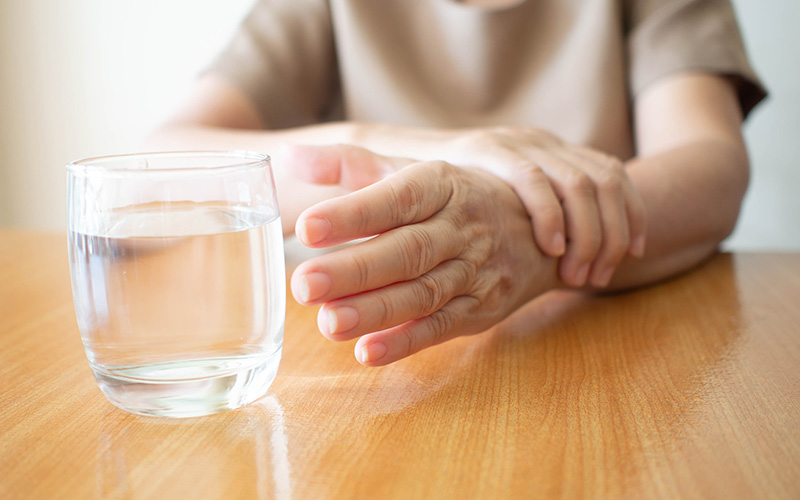
April is Parkinson’s Awareness Month. According to The Michael J. Fox Foundation for Parkinson’s Research, an estimated 1 million people in the United States and more than 6 million people worldwide are affected by Parkinson’s disease. Wojciech Gryc, MD, with Valley’s Neuroscience Institute explains what Parkinson’s is, its symptoms and diagnosis, and some common misconceptions about the disease in this DocTalk video.
An abbreviated summary of the conversation can be found below the video.
0:26 | What is Parkinson’s disease?
Parkinson’s disease is a neurological disorder that affects movement. It is due to the loss of nerve cells that are used when our bodies make the chemical messenger (in the brain) called dopamine. Dopamine is very important in regulating and controlling movement. We do not know what exactly causes this nerve loss, but there’s a lot of research looking into that.
0:55 | What are the main symptoms of Parkinson’s disease and how may they vary between individuals?
The main symptoms of Parkinson’s disease include things like tremors (shaking of part of the body), rigidity (stiffness in the body), bradykinesia (slowing of the body), postural instability or gait issues (how a person walks), and balance problems. However, symptoms and their progression can vary from person to person, caused by a range of factors and conditions.
1:37 | What are common misconceptions about Parkinson’s disease?
- Age: A widespread misconception is that Parkinson’s only affects the elderly. In reality, it can also occur in younger people, highlighting the importance of early diagnosis.
- Genetics: Another misunderstanding is viewing Parkinson’s mainly as a genetic disorder. While there are genetic cases, most are rare. This means that just because a person has Parkinson’s disease doesn’t mean that their children or other family members will develop it.
- Symptom Range: Many believe Parkinson’s only affects physical symptoms, such as tremors and stiffness. However, it also it can also include gastrointestinal issues, anxiety, depression, sleep disturbance, or cognitive changes.
3:05 | How is Parkinson’s disease diagnosed?
There’s no one test for Parkinson’s. Diagnosis involves a complete medical and neurological evaluation, and sometimes, Parkinson’s medications or other tests may be used to rule in or rule out the condition. In some cases they may do bloodwork, imaging tests, or even skin biopsies.
3:35 | What are the current treatment options for Parkinson’s disease?
Our current treatments primarily aim to manage symptoms. This includes medications to either replenish or mimic the effects of dopamine, physical therapy for mobility, and, in certain cases, surgeries like deep brain stimulation (DBS) to enhance quality of life.
4:08 | What advances in treatment have been made in recent years?
Recent advancements in treatment of Parkinson’s disease include new medications that can control the symptoms for a longer period of time and decrease the side effects. New surgical options and implantable devices have been used to improve the functioning, the effectiveness of the medication, and to increase the independence of people with Parkinson’s disease. There has been a focus on holistic approaches and tailored treatments to focus on patients’ personal needs and conditions. Research also includes gene therapy, and stem cells.
4:50 | What factors contribute to a better quality of life for patients with Parkinson’s disease?
A multi-disciplinary approach to treatment of Parkinson’s disease in patients is very important. This involves neurologists, physical therapists, occupational therapists, and even mental health providers who can enhance the well-being of patients. Physical exercise, well-balanced diet, and staying active with support groups, family members, and friends can also improve the functioning and well-being of patients.
5:24 | If you or your loved one has symptoms, what should you do next?
If you or a loved one notice symptoms like tremors or stiffness, consulting a primary care provider is a critical first step. Early treatment can significantly benefit long-term management and outcomes.
Understanding Our DocTalk Videos
The information shared in the video above represents the opinions of the individual healthcare provider(s) featured. Our DocTalk presenters will sometimes give a general overview including risks, symptoms, and treatments for the medical conditions they are addressing. Therefore, they may not cover specific details that would be available in other resources or in an appointment with a provider about your own healthcare conditions. Please also note that the written summary may not capture every detail contained in the video, and additional information might only be in the video format. Our goal is to inform, educate, and inspire healthier living. If you have any questions about the video content, please contact us HERE.

